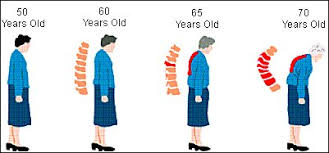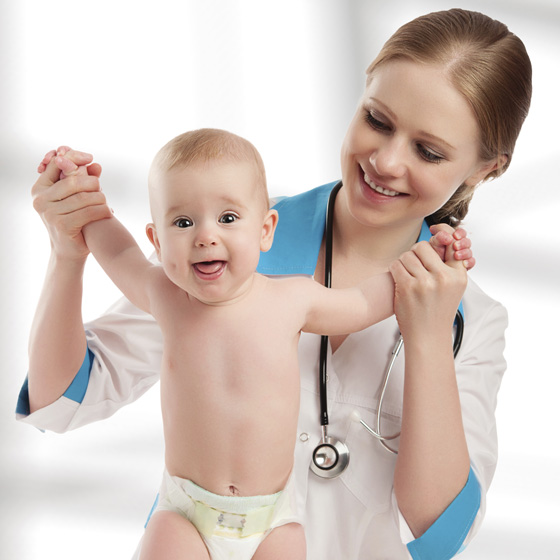Knowledge, Attitude and Practice of Postmenopausal Osteoporosis among Females Aged 17-24 Years, Khartoum, Sudan

Abstract:
Background: Osteoporosis (OP), a metabolic disorder which affects mainly
bones, is characterized by low bone mass and is associated with serious health and
economic burden. The main musculoskeletal problems associated with it are hip fractures
with a worldwide prevalence of about 1.6 million and high rates of morbidity and
mortality. It is a silent disease and usually does not manifest until fractures
occur. The Aim of this study were to assess knowledge, attitude and practice toward
postmenopausal osteoporosis and its preventive measures among female students aged
17-24years in Khartoum, Sudan.
Methodology: A cross sectional study was conducted in three different
faculties of the University of Khartoum. Data was collected from 226 female students
aged 17-24 by stratified systematic random sampling using a pre-tested, pre-coded
self-administered questionnaire.
Results: The majority (84.8%) of respondents heard about osteoporosis.
Faculty curriculum was the main source of information (31.1%), followed by family
and friends (15.3%). The overall knowledge of respondents about OP was below average
(57.1%), average (42%) and good (0.9%). About three-fifth (58.1%) were aware about
their susceptibility to get it in the future and (61%) were concerned about taking
preventive measures. The majority of respondents (94.9%) perceived the seriousness
of OP. Milk and dairy products were the most commonly identified as sources of calcium
(33.8%).
Conclusions: The overall knowledge was below average. Raising knowledge
about osteoporosis may be an effective tool in preventing the problem and subsequently
osteoporotic fractures later in life.
Keywords: postmenopausal oosteoporosis,
hip fractures, knowledge, attitudes, practice.
References:
[1].
Dalsky GP, Stocke KS, Ehsani AA, Slatopolsky
E, Lee WC, Birge SJ. Weight-bearing exercise training and lumbar bone mineral content
in postmenopausal women. Ann. Intern. Med. 1988;108
(6): 824–8
[2].
Exucutive summary. Middle East and Africa audit. International
osteoporosis foundation 2011. A report
[3]. Ghadeer
zakai, haytham zakai. Awareness about osteoporosis among students in Jeddah, Saudi
Arabia. Journal of Advanced laboratory research in biology 2015; 6.
[4]. Hala M. Elsabagh, Abdelaziz
F. Aldeib, Salwa A. Atlam, Shimaa M. Saied. Osteoporosis knowledge and Health Beliefs
among Employees of Tanta University. American Journal of Research Communication;
2015: 12.
[5].
Hreybe H, Salamoun M, Badra M, Afeiche N, Baddoura O, Boulos S,
Haidar R, Lakkis S, Musharrafieh R, Nsouli A, Taha A, Tayim A, El-Hajj Fuleihan
G. Hip fractures in Lebanese patients: determinants and prognosis. J Clin Densitom.
2004; 7(4):368-375.
[6].
I.A. Dontas and C.K. Yiannakopoulos. Risk factors
and prevention of osteoporosis-related fractures. J Musculoskelet Neuronal Interact
2007; 7(3):268-272.
[7].
Johnell O and Kanis JA. An estimate of the
worldwide prevalence and disability associated with osteoporotic fractures. OsteoporosInt
2006; 17:1726.
[8].
Juan Lu, Yongyun Shin, Miao-Shan Yen, and Shumei S. Sun. Peak
bone mass and patterns of change in total bone mineraldensity and bone mineral contents
from childhood into young adulthood. Assessment & Management of Musculoskeletal
Health Journal of Clinical Densitometry: 2014.
[9].
Kh. Eltohami, W.Sami, A. Al eidan, M. Almobarak,
F. Alotaibi. Study of knowledge, attitude, and practice of osteoporosis among adult
women in Majmaah city, Saudi Arabia. International journal of health and rehabilitation
science; 2015:4:3.
[10]. Kumar, Abbas,
Aster, Robbins Basic pathology, Ninth ed., Canada, Elsevier 2013;768-770.
[11]. Mansoureh Safizadeh, Elahe
Aminizadeh, Hossein Safizadeh. Awareness of osteoporosis among female employees
in Kerman, Iran. Russian Open Medical Journal; 2015;4;1
[12]. Morales-Torres
J. Strategies for the prevention and control of osteoporosis in developing countries.
Clin Rheumatol,2007;26(2):139-143.
[13]. Mukesh Srivastava,
Gul Naz Fatima, Richa Srivastava1 and Man Mohan Singh. Assessment of Awareness of
Osteoporosis Amongst Unmarried Indian Girl Students Pursuing Undergraduateand Postgraduate
Professional Courses..Asian Journal of Oral Health & Allied Sciences
2; 2013; 3.
[14]. Noman-ul-Haq, Maria Tahir, Qaiser Iqbal and
Aqeel Naseem.
Exploration of Osteoporosis Knowledge and Perception among Young Women in Quetta,
Pakistan. J Osteopor Phys; 2015, 3:3.
[15]. Rima Sayed-Hassan,
Hyam Bashour &Abir Koudsi. Osteoporosis knowledge and attitudes: a cross-sectional
study among female nursing school students in Damascus. Arch Osteoporos2013;
8:149.
[16]. Sarah Sayed El-Tawab, Emmanuel
Kamal Aziz Saba, Heba Mohmoud Taha Elweshahi, Mona Hamdy Ashry. Knowledge of osteoporosis
among women in Alexandria (Egypt): A community based survey. The Egyptian Rheumatologist
2016; 38, 225–231.
[17]. Stacie E. Geller, Richard Derman.
Knowledge, beliefs and factors for osteoporosis among African American and Hispanic
women. Journal of the national medical association 2001; 93:13-21.
[18]. Toh LS, Lai PSM, Wu DB-C, Wong
KT, Low BY, Anderson C. The development and validation of the osteoporosis prevention
and awareness tool (OPAAT) in Malaysia. PLoS ONE 2015; 10(5).
[19]. Waleed M Sweileh1, Samah W
Al-Jabi, Sa’ed H Zyoud, Ansam F Sawalha1 and Mustafa A Ghanim.Osteoporosis is a
neglected health priority in Arab World: a comparative bibliometric analysis; Springer
Plus 2014, 3:427
[20]. Y. H Khan,
A. Sarriff, A. H Khan, T. H Malhi. KAP survey of osteoporosis among students of
tertiary institution in Malaysia. Trop J Pharm Res, 2014;13(1): 155.
[21]. Z Jalili, N Nakhae , R Askar, V Sharifi. Knowledge, attitude
and preventive practice of women concerning osteoporosis. Iranian J Publ Health,
2007;36, 2:19-24.

